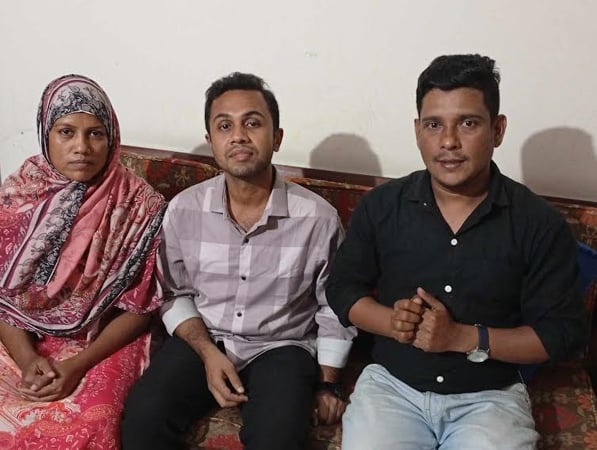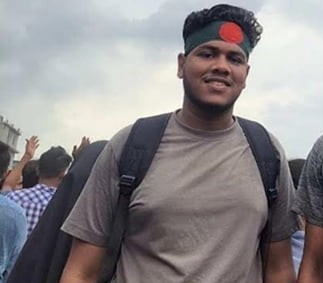It was July 20, 2024 — a day etched in the hearts of many, but none more than the family of Imam Hasan Taim Bhuiyan, a 12th-grade student from Narayanganj Govt Adamjee Nagar MW College.
On that fateful afternoon, during the height of the July Uprising, a video captured a heartbreaking scene: two unarmed boys standing before a group of armed police. One officer raised his gun and fired at the youth in front — that was Taim. His friend Rahat Hossain, tried desperately to pull him to safety. When that failed, Rahat himself was shot in the leg before fleeing.
Taim, only 17, died later that day.
The tragedy struck an even deeper chord when it was revealed that Taim’s father, Md Moynal Hossain Bhuiyan, is a senior sub-inspector of the police, stationed at Rajarbagh Police Lines. Taim’s death wasn’t just a statistic — it was police brutality killing one of their own.
Taim’s family, originally from Chandina Upazila in Cumilla, had been living in Jatrabari’s Kajla area. His father served the force. His mother, Parvin Akter, a housewife. Taim was the youngest of three brothers. His eldest sibling, Rabiul Awal, is pursuing a master’s degree at Sylhet Agricultural University, and his second brother, Jahid Hasan, is studying in Moscow.
Taim had been deeply involved in the student-led quota reform movement, which eventually spiraled into a mass uprising. His mother, Parvin, initially tried to keep him from the streets. But as police crackdowns turned violent, she began to support his fight for justice. She even accompanied him to protests — not only as a parent, but as a fellow citizen seeking change.
But on July 20, she couldn’t join him. She was stuck at work.

That morning, when the curfew was briefly lifted between 12:00 and 2:00 PM, Taim left home, telling his mother he was just going downstairs. Minutes later, chaos unfolded. As protesters gathered at Kajla, police began beating and firing at the crowd. Taim, Rahat, and another youth hid inside a tea stall. But officers forced the shop open, dragged them out, and beat them.
As they fled, police opened fire — bullets struck Taim. Rahat tried to shield him. Even as he pleaded with the officers, shouting that Taim was the son of a policeman, one cop reportedly responded, “Tell your father to come here.”
Rahat later told Taim’s brother, Rabiul, that Taim was still alive when police loaded him into a van, supposedly to be taken to Jatrabari Police Station. But in another video, recorded near the station, police were seen kicking Taim’s nearly lifeless body, even breaking his nose with their boots.
By the time his family found him at Dhaka Medical College Hospital, he was gone.
“The autopsy showed more than 200 bullet wounds,” Rabiul said, struggling to contain his grief. “His body was riddled with bullets. That wasn’t law enforcement — that was execution.”
An audio recording of their father’s voice later circulated online. Speaking to someone on the phone after seeing his son’s body, he asked, “How many bullets does it take to kill a person, sir?” — a question that encapsulated both confusion and heartbreak.
The family said police tried to hide his body, refusing to acknowledge his identity. His aunt, Shahida Akter, said it took a frantic search to locate him in the morgue.
The next day, the family took Taim’s body to their village in Chandina for burial. But police limited the burial time to just 30 minutes, and the local Union Parishad chairman, Abu Yusuf, barred the announcement of his death via mosque loudspeakers. He called Taim a “Shibir activist”, trying to discredit his legacy and label him a terrorist.
Though the fascist regime fell on August 5, brought down by the very student movement that Taim stood with, his family is still waiting for justice.
Taim’s mother, Parvin, is still in shock. Her eyes carry the weight of every moment she wishes she had back.
“I want justice,” she says, her voice steady. “I want capital punishment for those who murdered my son.”
Taim’s story is not just about one boy killed in a protest. It’s about a mother’s heartbreak, a father’s helplessness, and a nation’s reckoning with state violence. It’s about standing up when silence is easier. And it’s a reminder that even the children of police officers are not safe when justice is absent.


